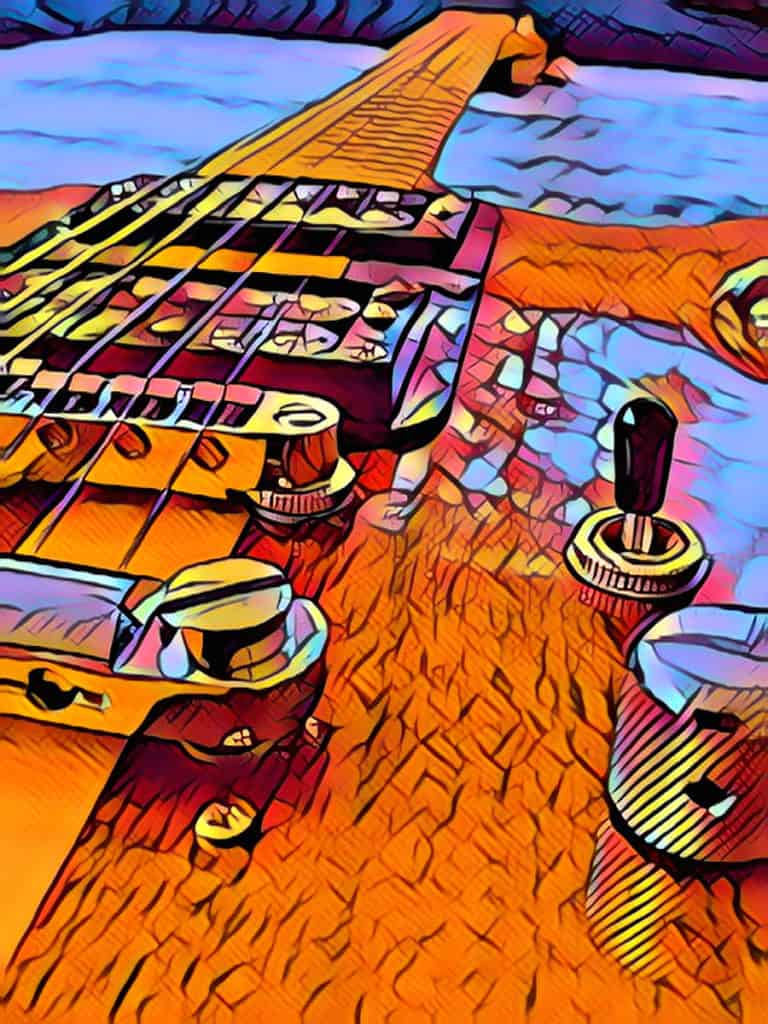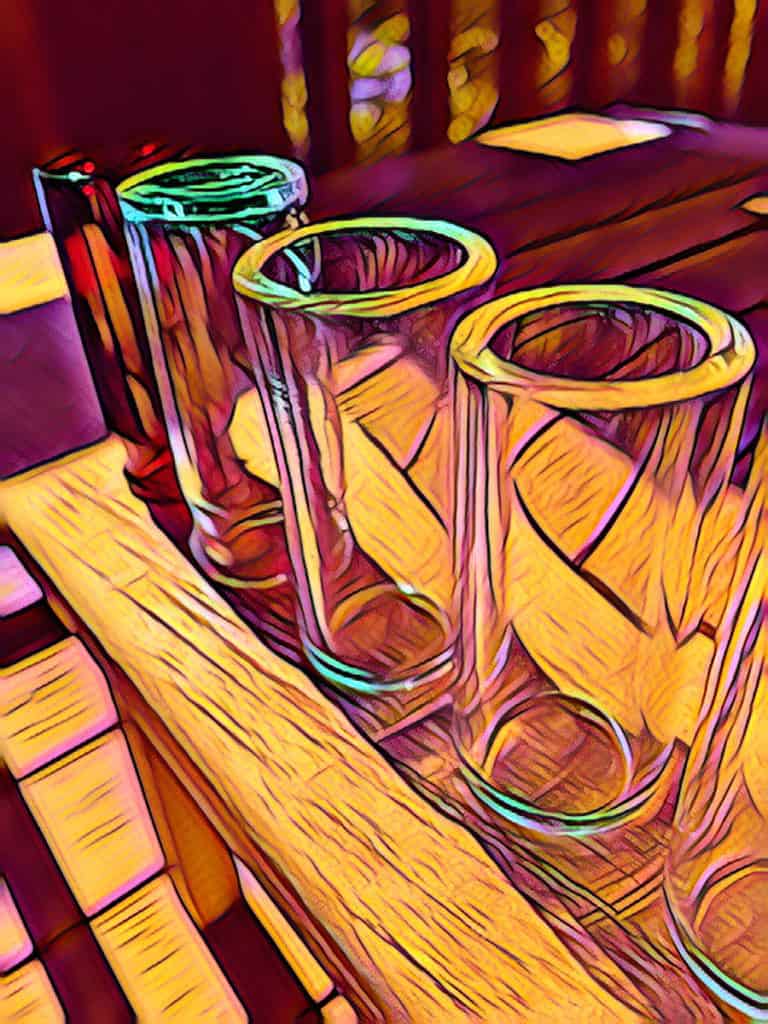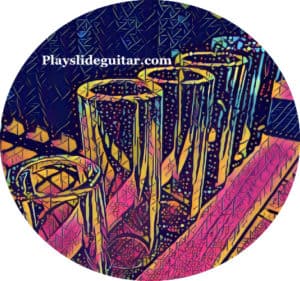As an Amazon Associate Playslideguitar.com earns from qualifying purchases. This page contains affiliate links.
There are countless ways to articulate notes using a slide when playing guitar, and the various musical expressions you can create with a slide are what makes its sound so distinct. But there are also many ways to shape your slide guitar tone, and using a compressor pedal is a great way to enhance your dynamics.
Using a compressor pedal for slide guitar can give you options for accentuating the attack of notes, adding more sustain to them, and thickening up your tone so that it has more of a punch to it. There are many great compressor pedal options on the market (check out Origin Effects’ SlideRIG MK2 on Amazon), and taking a closer look at using a compressor pedal for slide guitar can be a nice way to gain a deeper understanding of how to use one.
Here are some ways to use a compressor pedal to shape your dynamics when playing slide guitar…
Add More Sustain
Slide guitar is known for its ability to sustain notes, and to use vibrato as a means of accentuating them. But due to the physical properties of the slide, guitar, and strings, it isn’t always possible to sustain a note for the duration of time that you’d like to.
However, when your guitar is amplified there are ways to add sustain to notes by using a compressor pedal along with the gain stages of an amp. Perhaps the best use of a compressor pedal for slide guitar is to use it in this way, which can add more texture and tail-end to the notes you play with the slide.

By setting the compressor pedal to allow the natural attack of notes to come through, the compressor can engage for these notes and have a longer release to sustain them. If you combine this with your compressor and amp’s levels, you can boost your sustain and also add warmth and texture to your tone.
Here are the settings to do this:
- Medium to Fast Attack (usually this is having it at a lower setting, or turning the knob counter-clockwise)
- Higher Ratio
- Moderate to Slow Release (slower means having the knob at a higher setting, or turning it more clockwise)
- Lower Threshold (if there is a setting for this)
As you experiment with this compression technique, try varying levels of vibrato and extend the tail-end of notes a little longer than normal to see how it affects your sustain. Also, by adding a tasteful amount of reverb, you can really add a lot of texture to your tone this way.
Give It More Punch
When developing your technique for slide guitar, it can sometimes feel like you’re losing some of the dynamic spark that you were able to get on guitar when you used a flat pick to pick notes. Playing with your bare fingers can often make it feel like you’re losing some energy and punch to your notes.
However, with slide guitar this dynamic presence is just as important and can really add spice to your licks, solos, and other aspects of playing. You can use a compressor pedal to bring out the attack of your notes, and give them a boost that emphasizes the articulation and phrasing of notes.
A compressor pedal can be set to round out the sound of your notes right after you pick them, which has a way of enhancing the attack of them to listeners’ ears. The attack of the notes will become closer in dynamic range to the notes themselves that are sustained, and give the notes more punch and bite to them.
Below are the settings for adding more punch to notes…
- Moderate Release to Fast Release – be sure to use a slow enough release where the compressor doesn’t falter the sound in the middle of the note’s duration, but a fast enough release that it deactivates before the next played notes if possible.
- Slow Attack
- Experiment with Ratio (try medium or medium-low as a start, and use ears to calibrate)
Keep in mind that developing good right hand technique for slide guitar is still the best way to articulate notes with energy and zest. However, you can always emphasize this aspect of your playing even more by using a compressor pedal, and you can use one as you continue developing your technique.
Smooth Out Your Dynamic Range
Dynamics can add a lot to any instrument’s expressive capabilities, however it isn’t always easy to control your dynamics for certain playing situations. Whether you’re using a different amp, playing in a new band, recording for a session, etc. there are going to be times where you may play a little louder or softer than you’d like within the music.
Compressor pedals can be great for controlling these varying levels so that when you play too loud, the compressor can smoothly bring down your peak levels in a natural sounding way. Some of the best compressors have an ability to add warmth and character to your tone, while giving you more stability dynamically.

Just like a tube amp, you can push a compressor pedal subtly with louder dynamics and allow it to engage notes in a way that adds texture to your sound. By setting the compressor in a way that works with your sound and dynamics, you can use it as a tool that works with your playing instead of reacting too much against it.
Try these settings to smooth out your overall dynamic range, while keeping your tone warm and crisp…
- Low Ratio
- Slow Release
- Low Threshold
- Moderate to Fast Attack
Best Compressor Pedals for Slide Guitar
There are many compressor pedal options for slide guitar, but finding one that has the settings and tone you’d like will benefit you the most. Try to use one that adds value to your tone (and makes it sound warm and thick), instead of making it sound dull and thin.
Most compressor pedals are fairly intuitive to use, but some will have certain settings and parameters that can be dialed in more specifically to create a nice balance of compression and tone.
Here are some good compressor pedal options for slide guitar…
Good Value and Tone: Keeley Compressor Plus (link to Amazon)

This compressor pedal is intuitive and easy to use, while still providing a nice compression tone for a stompbox pedal. Although there aren’t as many parameters as you’d expect from a compressor, this pedal can be a good option for slide guitar if you’re looking to add some dynamic shaping to your tonal palette.
Since slide guitar can often benefit from increased sustain, it’s nice that this pedal has a sustain control to help with dialing it in. It’s also handy that it has a switch for single coil and humbucker pickups. Click here to view it on Amazon…
Best Tone and Warmth: Cali76 Compact Deluxe (available on Amazon)

This is one of the best compressor pedal options for slide guitar because of the richness of the pedal’s tone. Its design is based on the classic 1176 compressor units, which are known for their smooth compression and warm tone.
It’s nice that this pedal also has dedicated ratio, attack, and release controls, which are beneficial for utilizing multiple compression styles and techniques. Click here to view it on Amazon…
Parameter Options and Tone: EarthQuaker’s Warden V2 Optical Compressor (link to Amazon)

Another good option if you’re looking for a warmer tone and more setting options, this pedal will provide clean and transparent compression for your slide playing. It has plenty of parameter options for experimenting with compression styles, and it also has a sustain control, which can be helpful for slide guitar. Click here to see it on Amazon…
Best Design for Slide Guitar: Origin Effects’ SlideRIG MK2 (link to Amazon)

Based off of Lowell George’s use of analog compression in recording studios, this is a great compression pedal to use for slide guitar. You can use it to easily dial in more sustain for your notes, or to add more punch to them. Click here to view it on Amazon…
If you’re interested in using delay for slide guitar, click here…
